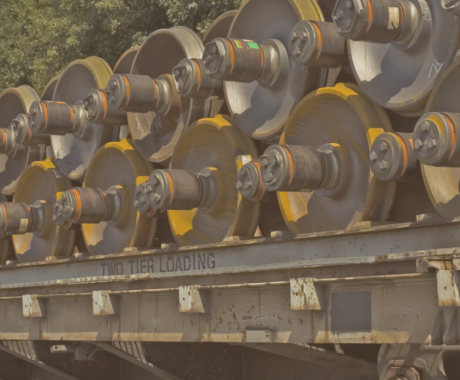Energy harvesting, the collection of small amounts of ambient energy from the surrounding environment to power autonomous electronic devices or circuits, is a promising technique that can help produce renewable and clean energy and improve infrastructure sustainability. This technique is used to extract a sample of energy from physical phenomena and the maximum feasible amount of energy. This article introduces the different technologies used to convert the harvested energy from vibrations into electricity in the railway industry.
Energy Harvesting Systems
To explain more about the main principle behind the energy harvesting systems, the energy can be gathered from different sources that are available in the industrial or the environmental surroundings such as natural or artificial light, elevated levels of noise, temperature gradients, mechanical vibration, pipes with air or water fluid. The energy is harvested in the peak time of energy availability. Then, it is being saved and stored in a storage device to be used later, meeting the demand and supply for the daily operation of an electronic system at specified periods. Therefore, the main goal of energy harvesting is to store the power to be used later in needed times.The process of converting the vibrations into electricity demands three elements to be included in the energy harvesting system. First, a harvester is a part responsible for gathering energy from the surrounding environment. Second, a low power management system is responsible for converting the voltage level of the harvested energy to those of standelectronicsonic and power the electronic system. The last element is the storage system to save and store the excess of harvested energy. This process leads to many environmental and economic benefits, including the elimination of the dependency upon batteries, boosting and enhancing the functionality of the device, increasing the lifetime of the device, elimination of supply wires, facilitating the process of installation, lowering the level of environmental waste, and presenting cheaper options at lower costs.
Harvesting Types
There are currently three efficient types of harvesting which are currently commercialized in the market.
Electromagnetic Induction
The first one and the oldest technology is electromagnetic induction, discovered by Michael Faraday and James Clerk Maxwell more than two hundred years ago. However, electromagnetism has only been used to generate electricity since the early 1930s. According to Helios Vocca and Luca Gammaitoni, the base of the electromagnetic harvester is the electromagnetic induction phenomena, which are defined as “the production of a voltage across a conductor when it is exposed to a varying magnetic field.”“The inductive technique is usually realized by coupling a permanent magnet and a solenoid in motion relative to each other. These systems show complementary behavior in terms of frequency bandwidth and optimal load in relation to piezoelectric techniques. They are recommended for low frequencies (2–20Hz), small impedance, and medium-size,” was stated in the 2015 book “Micro Energy Harvesting” from Briand, Yeatman, and Roundy.The magnets and coils used in this technology bring their own advantages, including being reliable, maintenance-free, cost-effective, and configurable. On the other hand, they have many disadvantages, including quite a high price, very complicated manufacturing, and fragility during the chaotic vibrations. Regardless of their disadvantages, those harvesters are the most efficient ones in the market, generating the maximum power output from the vibrations.
This technique is used to extract a sample of energy from physical phenomena and the maximum feasible amount of energy.
Piezoelectric Ceramic
The second technology is piezoelectric ceramic. In the last few decades, piezoelectric materials have played a vital role as a mechanism of energy harvesting as the demand for high-power-density and long-lifespan power sources has become higher. The piezoelectric materials have a crystalline structure that facilitates transforming mechanical strain energy into electrical charge. This structure also plays an important role in converting an applied electrical potential into mechanical strain. The ability of such a structure to transform these types of energies helps in providing the wireless sensor nodes with their needs for electrical energy. This is possible by detecting and extracting the mechanical energy from a specified environment, then converting it into electrical energy.There are many advantages when choosing piezoelectric technology in the process of converting mechanical energy into electrical energy. Advantages include high energy conversion efficiency, its ability to be made on a greatly reduced scale, and simple implementation. However, piezoelectric ceramic technology is probably the most complicated way of generating power from vibrations. First, it is made of very toxic materials. Second, it is fragile and can be easily damaged irreversibly, which is also not good for the railway industries since there are many tough vibrations. Third, it is costly. In addition to that, piezoceramics do not differ a lot from the market within its efficiency level. Therefore, it is likely the least desired way of extracting the energy from vibrations.
Piezoelectric Polymer Technology
The third way to do it is to use the piezoelectric polymer technology or a material called PVDF. A fragile film assembled on the cantilever structure with the tip mass on end moving up and down while installed on the vibrating equipment. This is the newest method of generating electricity from vibrations. And just as electromagnetic induction, it has its own advantages and disadvantages, including lower power output and lifetime limitations. However, offering it all at reasonably lower prices, much greater durability of acceleration shocks, and assembly using only environmentally friendly materials.
Modern Interest
In the last few decades, the interest in the electromagnetic and piezoelectric conversion mechanisms became of higher importance for their modernized provided solutions. These solutions include the higher capability of electromechanical coupling, their sustainability strategies, their simplified designs, and their ability to break through the old ways of dependency upon batteries. However, piezoelectric polymer technology has proved its superiority over piezoelectric ceramic and electromagnetic technologies from environmental and economic perspectives.



